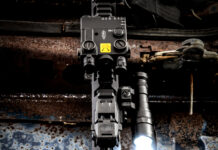Remington 147-grain Golden Saber brass-jacketed hollow points yielded a 2.75″ 5-shot group, with four of those in 1.20″ and the best three in 0.85″. At the other end of the most popular 9mm bullet weight scale was American Eagle 115-grain full metal jacket. The American Eagle put all five shots in less than an inch, 0.95″ to be specific. Four of those five were under two thirds of an inch center to center, 0.65″. The best three were barely over half an inch apart, at 0.55″. For a middle-weight 9mm ammo (which would have been the heaviest available on gun store shelves 30 years ago), the choice was 124-grain Aguila full metal jacket. This load gave us a spot-on 1.00″ group with all five shots. Four were in the same 0.65″ as we found with the American Eagle, and the best three were a mere 0.45″ center to center.
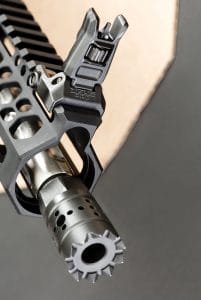
Rock River Arms advertises this model as capable of 1.5” groups at 50 yards. When we got groups like these using a red dot sight without magnification, extrapolating that at twice our 25-yard distance the group size should double (not counting wind, mirage, or other external factors) we felt Rock River had not been exaggerating with that 1.5”/50 yard promise.
Recoil was mild. The multiple shooters on the test team, ranging from big six-foot guys to one petite female, all felt the “kick” was indistinguishable from that of a .223 the same size and configuration. Everyone loved both the trigger, and the very ergonomic selector switch.
Reliability? We had a single malfunction, but it was a beaut . . . and it was my fault. I had noticed the gun was dry when it came out of the box, and was perversely curious to see how it would work that way, given the well-known truism that AR-15s need to be well lubricated. I found out. A couple hundred rounds into the test, I experienced an ejection failure that left a spent casing wedged transversely over the rear of a live 9mm cartridge that hadn’t made it all the way into the chamber. That was no “tap-rack” situation, and in serious use would have required immediate transition to the sidearm. I had to use a screwdriver to clear the stoppage. I then applied proper lube, and the Rock River 9mm ran fine for the rest of the test. The moral of the story? Do not run an AR-15 dry . . . do not eat the yellow snow . . . these are The Laws.
So, What’s It FOR?
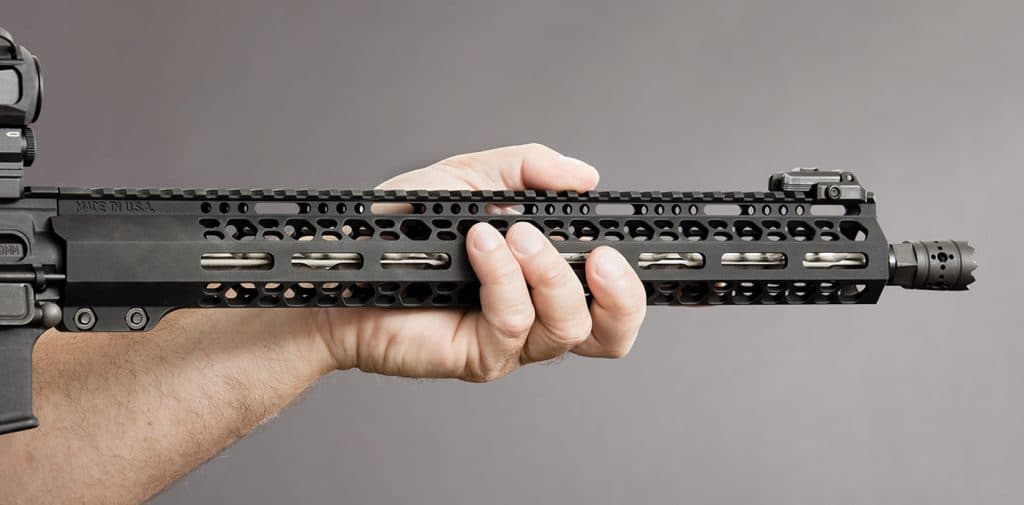
Well, to start with, there’s a reason they call this variation a competition carbine. Take a match that mixes long gun and handgun skills in its courses of fire. Combine that with one of the many ranges in the country that do not allow high powered rifle ammunition to be fired. Voila: you have a situation where the pistol caliber carbine is ideal, especially if it is built on the same platform as the larger caliber rifle the shooter might keep for “more serious business.” While pistol bullets, even from a carbine, can’t be expected to do as much neutralizing damage as .223/5.56 NATO rounds or other more powerful AR-15 chambering options, the 16-inch barrel gives enough added velocity to turn 9mm into the equivalent of .38 Super with the same bullet weight.
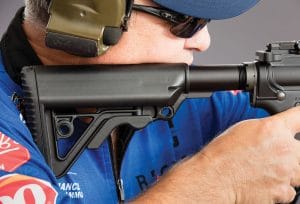
Three-gun competition is not this writer’s game (a bit too athletic for old farts like yours truly) so I reached out to Kevin Williams. Kevin has earned a fine nationwide reputation as a police firearms instructor, but is also an avid and formidable competitor in Three-Gun and other action shooting games. Kevin told On Target, “Pistol caliber carbines are not used in three-gun much that I have seen. But the USPSA pistol caliber carbine division seems to be thriving. I have seen them starting to appear at IDPA.”
Another niche a firearm like the LAR-9 fits well is home defense. Like any AR-15 platform, its telescoping stock allows it to instantly adapt between the largest and the smallest member of the household authorized to access it for family protection. Another relevant quote from Kevin Williams: “I think this class of carbines offer a good choice for home defense. I say this because I had my mother in her late 70s try an MP-5 in semi auto and she had no problems shooting 4- to 6-inch groups at 15 yards off hand. She did find it a bit heavy. My wife while I was gone had the CZ (EVO carbine) loaded with a SIG Romeo 4M and ready to go. She had no problem hitting 8 inch plates out to 20 yards. I think these offer a better choice than shotguns and rifle caliber carbines for some.”
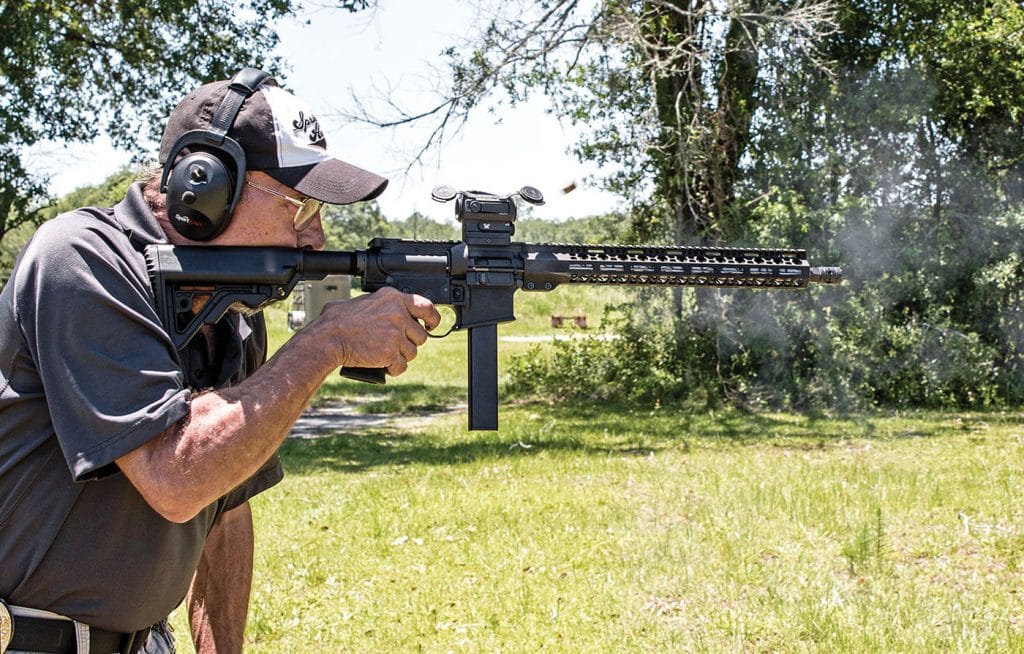
It should also be noted that the Competition Carbine’s conspicuous lightness up front will be a great asset for someone who may not have great upper body strength but has to use the carbine to hold a dangerous criminal at gunpoint for a while until the police can get to the scene to take over.
If recoil’s the same, why not just go .223 for home defense? Muzzle blast is the big difference. With a 9mm round out of a 16-inch barrel, the home defender is a lot less likely to suffer temporary or permanent hearing loss from the devastating reverberation of a .223 round going off in close quarters.
















